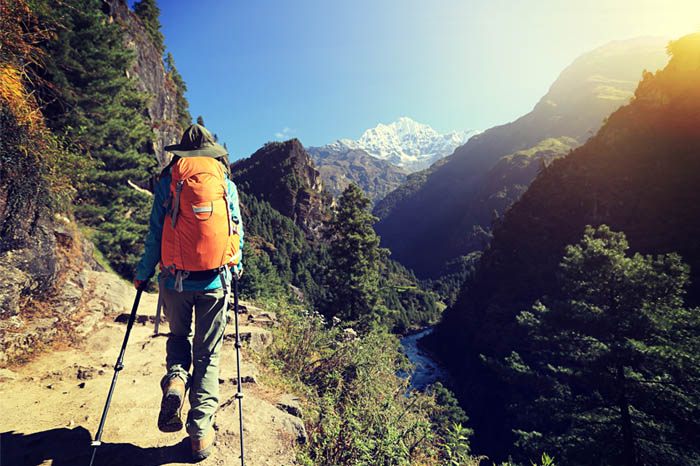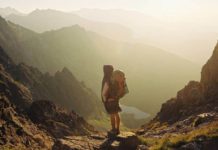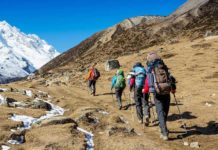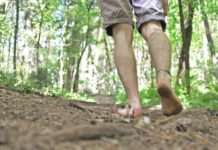“Trekking” has always been a popular phrase; even non-travelers acknowledge its connection to traveling and other related issues. Yet, what exactly it entails still leads to confusion at times - even for regular tourists! Worse, certain people use "trekking" and "hiking" interchangeably, assuming their meanings are identical.
So what is trekking exactly then? This article will shed some light on these matters. Learning the proper terms to use will help you sidestep unwanted misunderstandings, which proves rather practical in future trips and cruises (if any).
What Does Trekking Mean?
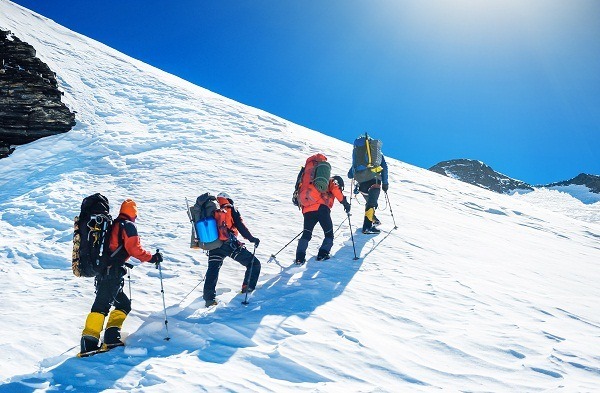
1. The Fundamental Definition
Trekking refers to vigorous and long walks on countryside footpaths and trails. Such types of pleasure walking originated from Europe quite early, around the seventeenth or eighteenth century.
Though some argue that religious pilgrimages existed long before that, these activities mostly involved long-distance walking for spiritual purposes (associated with particular religions).
2. How The Term Differs Across Different Countries
Not every region uses the same phrase. "Trekking" - a short term for multi-day hiking, is mostly preferred by Pakistan, India, Nepal, South America, North America, and Iran.
On the contrary, Ireland and the U.K. adopt "walking" instead to describe all walking forms - whether it's a short walk in parks or long backpacking trips to the Alps.
At the same time, remote England areas tend to use “hillwalking”, “fell walking”, and “rambling” (a rather outdated term).
Australia, on the other hand, is more familiar with "bushwalking" (both on-trail and off-trail), a term adopted by the Bush Walkers around 1928.
"Bushwalking" alludes to difficult traveling through the undergrowth, dense forests, or bushes, in which forward progress calls for constant vegetation pushing. In more extreme cases - where the vegetation grows so dense that any human passage becomes impeded - trekkers would use machetes to clear pathways better.
In contrast, New Zealand refers to active walking as "tramping" (for longer and overnight trips) - a common activity with numerous organizations throughout the country.
And last but not least, North Americans name multi-day hikes (with camping activities) as “backpacking”.
3. Necessary Equipment
Trekking equipment depends on numerous factors, one of which is the local climate. But in most cases, day trekkers should bring along food, water, a hat, a map, and some rain-proof devices. Though hiking boots used to thrive in popularity for rougher terrains, they have ceased to be common in recent years, being replaced by sturdy running shoes.
Aside from those basic necessities, The Mountaineers Clubs also list:
- Sunglasses
- Compass
- Sunscreen
- First-aid kit
- Flashlight
- Knife
- Firestarter
Other clubs recommend gloves, hats, insect repellents, and emergency blankets as well. For us, it doesn't hurt to carry trekking poles, since they lend great support in carrying heavy backpacks.
Most of these suggestions are tailored for warm seasons (like spring or summer). Though cold periods still demand more or less the same devices, you will need better trekking skills and more specialized gears to withstand the harsh weather.
What Are The Differences Between Trekking and Hiking?
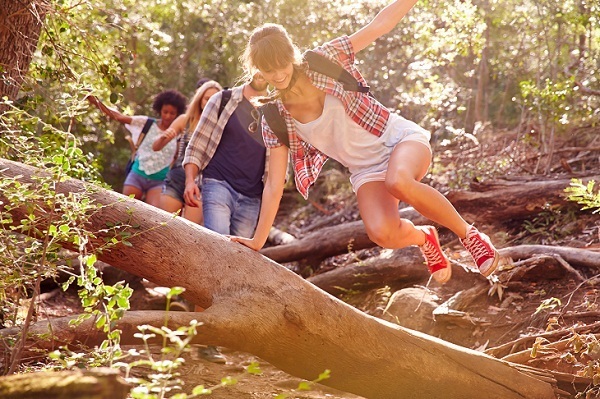
1. Hikes Are Shorter
Duration has always been the most transparent difference between the two walking forms.
For one, trekking never lasts less than two days, and most trekkers often have a clear destination in their mind. To accomplish their goals, these people are willing to traverse thousands of miles on one single trip.
On the contrary, hikes have a much shorter span compared to their counterparts. When a person says, "I'm going hiking!", chances are the trip only lasts for a few hours - or a day at best. Rare cases involve overnight camping, though that still will not take more than two days like trekking normally would.
2. Trekkers Do Not Follow Marked Trails
Another distinction to bear in mind lies in the involved terrains. Most hikers set out on marked trails to walk through hills, forests, mountains, or any other well-known natural environment.
Trek journeys, on the other hand, are rarely associated with marked paths. Trekkers like to set their bar higher by exploring much less common nature sites and being off the beaten path.
Since the latter refuse to conform to pre-set paths, they have greater opportunities to land upon untouched or undiscovered sceneries.
3. Trekkers Never Come Back To The Same Base
Though hiking can occur overnight, its base is mostly situated on one specific spot. For illustration, hikers can camp in a closeby mountain hut and go to another peak the next day. But once the night comes, they always return to their base - the first hut.
On the contrary, trekking practitioners never come back to their previous locations, always emphasizing the destination ahead.
Every time they stop, their bases change to another place - whether it's a lodge, hotel, tent, or any other accommodation type. The camping sites in these cases are often influenced by walking routes and weather conditions.
4. Hikers Need Much Less Equipment
Though basic devices are similar for both activities, their further requirements witness certain variations. Since hiking lasts much shorter, only a pair of good boots or shoes sometimes is enough, along with one or two clothing items to handle unexpected weather and temperature changes. If the trip lasts a whole day, bringing a backpack to keep food, water, and necessities is also recommended.
With hiking, maps or compasses are a great addition but not really necessary. After all, most trails are clearly marked, with transparent signs to indicate the right path to go and how long you should keep walking.
Treks are a slightly different story, calling for more equipment. A good package should include a compass, map, sleeping mats, sleeping bags, walking poles, waterproof jackets, and fast-drying clothing.
5. Trekking Is Much More Physically Demanding
You should have guessed by now that trekking demands an entirely different effort level - and hence, not tailored for everybody. Months-long physical training and preparedness are a must if you wish to travel for weeks without stopping. Not to mention, the whole trip is quite time-consuming, as you traverse across numerous terrains and regions.
Here's a fun trivial fact: the fastest trek ever recorded by Guinness lasted 41 days, 19 hours, and 51 minutes for a path of almost 800 km. Now you understand why we claim it's a demanding activity!
Meanwhile, hiking is much more leisure and easy to accomplish - even for those that have never hiked a mile in their lives. You also enjoy much broader and flexible choices when it comes to trails.
Their difficulty degrees and lengths are often indicated right from the start, helping hikers visualize the possible challenges ahead. Make sure to pick one that suits your physical ability best!
Similarities Between Hiking And Trekking
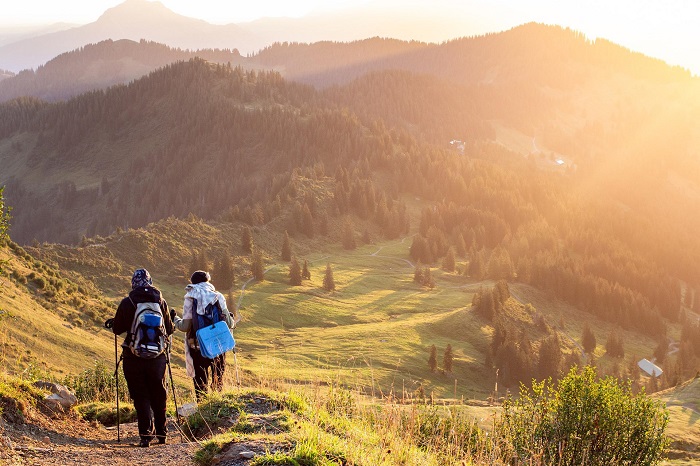
Trekking and hiking are considered among the most common outdoor activities with tons of similarities.
For starters, both entail long-distance walking on foot (though sometimes other means, such as horseback, are also present). Other involved tasks include camping, wild roughing, and in-depth exploration of new places. They require more or less the same devices, such as trekking poles, boots, and clothing.
And most importantly, what strikes these two as extremely comparable lies in their shared physical and mental boosts. Some of the most outstanding health advantages are as follow:
- Both lower heart disease risks & improve blood pressure: CDC studies have concluded that both walking forms reduce 50% of stroke dangers, circulating blood on a regular basis to sustain energy for your body.
As a result, they are highly recommended for people exceeding 40 years old. Organizing weekly or monthly trips for your parents and grandparents would be a terrific idea!
- Both give your overall fitness a major boost: Your muscles will benefit a ton from these activities. They build more strength for your lower leg regions, thighs, hamstrings, and hip muscles, enhancing your endurance against harsh conditions and weather.
Scientists have also proven that both are listed as weight-bearing tasks, fostering bone density and core energy. The more you walk, the stronger your bone structures and muscles will be!
- Both burn calories: Wanting to lose some weight or tone the muscles? Throw those gym exercises away; it's time to hit the trails!
Trekking and hiking burn around 400 to 980 calories in just one hour alone - as per Livestrong investigations. Imagine the amount you can burn after an overnight trip or week-long trek!
- Both improve mental health: Multi-day or overnight walking is the greatest way to shoo everyday stress away! According to specialized psychologists, anxiety and depression tend to grow stronger if one person is cooped up way too long indoors.
Hence, an outdoor trip will open your eyes to more perspectives. Beautiful sceneries around you know how to draw your attention, after all, which will temporarily sweep off constant worries and stress from your mind.
- Both nurture creativity: Imagination boosts are also another palpable benefit proven by science! The sunlight provides an immense source of vitamin D that lends your mind more creative energy.
Not to mention, vitamin D also increases your attention span and focus capabilities, delivering inventive spins on your problem-solving talents!
What Are Some Types of Trekking?
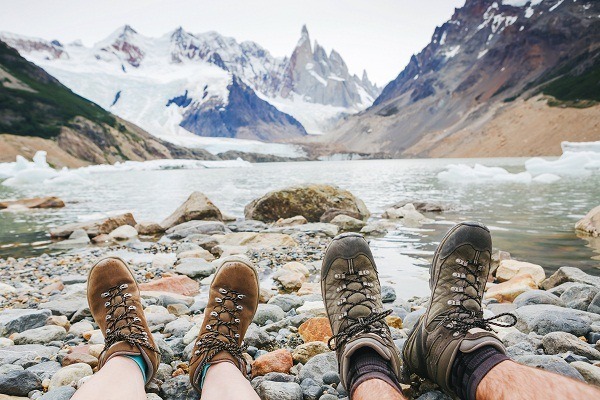
1. Lodge (or Teahouse) Trekking
These trekking trips often occur on trails littered with teahouses, which help minimize costs and hazardous influences posed by harsh weather conditions. They also shield trekkers better against harsher terrains.
Most of such treks are supported by local tour guides, who will lead you to regions with greater access to local inns and teahouses. Sometimes, they also offer you porters to handle the necessary equipment for the trip.
2. Fully-Organized Trekking
These trekkers will rely entirely on hired staff for pretty much everything - from group equipment and outfits to food and necessities.
While you are crashing out during the night, the staff will prepare breakfast and lunch in advance according to the menu your group has already picked out. Feel free to turn to whatever delicacies that suit your palettes: continental, western, Nepali, Tibetan, and more.
Overall, a basic fully-organized trekking trip includes:
- An experienced tour guide
- A cook
- A Sherpa
- A kitchen helper
Hence, it's no surprise that they are pretty expensive. Still, such an intensive support team will lend you better opportunities to enjoy the trip and discover beautiful, pristine landscapes where no teahouses are available.
3. Horse Trekking
It's a sub-branch of both options discussed above, taking you through areas purely on horseback. There are often tour services and companies for these trekking trips, lending you tack and horses if you do not already have one.
The scopes also vary, ranging from a quick visit to ranches to full-fledged drives, in which you move these animals miles after miles and camp out just like real cowboys. And, of course, since horse riding is pretty strenuous, make sure you have decent riding abilities and physical stamina.
4. Self-Prepared Trekking
And obviously, we will save the best for last. Self-prepared trips are by far the most common, since they charge much less and enjoy more flexibility. It's possible to either shorten or lengthen the journey to your heart's content, without strict reliance on the company's schedules and price ranges.
Nevertheless, that does not mean all are roses and sunshine! Since there are zero local guides to help you with the most basic stuff like translation or food, it's a must to plan everything carefully - maybe months or even a year in advance!
What Are Some Of The Best Trek Benefits?
Aside from the notable health advantages already discussed above, trekking also brings about tons of benefits that make it a worthwhile hobby to maintain:
- Extensive culture knowledge: As you have a direct and on-hand experience of the region's most practiced cultures, your perceptions regarding these matters will be extremely vivid and in-depth - much more so than rotted learning through books or documents.
- Lots of Friend-Making Opportunities: You can already seize a friend or two within your neighborhood alone; imagine how many companions you might gain in thousand-mile travel!
And from a more practical perspective, these new friends will lend you a decent place to stay overnight should you embark on similar trips in the future.
- Strong Will: A typical trek involves thousands of unexpected hassles and challenges - which, in a way, is actually a good thing.
Once you return from these journeys safe and sound, you will find yourself a changed person: more determined, more strong-willed, and ready to tackle all hardships life throws at you!
Conclusion
What is trekking? This article has handled the issue, along with other relevant facets to gain you a more insightful overview of what it entails.
Despite the demanding nature of such activities, frequent practices will give you tons of unprecedented benefits compared to regular hiking. Should your physical stamina and budgetary limits allow it, pick up a trek pole and jump onto the road now!


